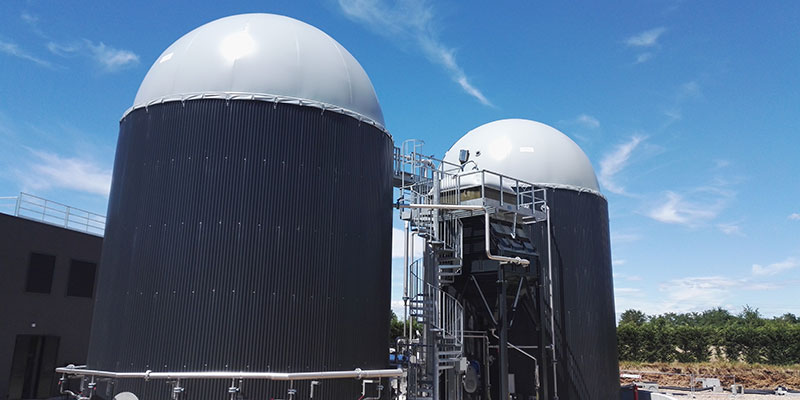Anaerobic Wastewater Treatment for Confectionary
When an Italian confectionary wanted to add waste-to-energy to its wastewater treatment, Fluence provided a hybrid solution to deal with the high-COD effluent

Background
Dolcissimo is a traditional Italian confectionary producer, owned by the French industrial group Novandie. The plant, located in Ossona in the province of Milan, was established in 1997 and has a production capacity of 30,000 tons. The company continuously updates its technologies to ensure rigorous hygiene and safety parameters and to guarantee a complete production cycle. With this goal in mind, Dolcissimo began research to design and build an enhanced wastewater treatment plant that also produces biogas.
Challenges
The plant's wastewater has high concentrations of both soluble COD, primarily sugars, as well as fats, both of which can be digested anaerobically to minimize sludge production and to produce biogas. A classic CSTR sludge digester wouldn't be appropriate due to the high sugar content, and a granular sludge rapid digester wouldn't be possible because the effluent's fat content makes the sludge very light, causing it to escape from the digester itself. Fluence was able to effectively combine these two technologies.
Solutions
To treat the company's wastewater, an initial flotator separates fats from the wastewater and concentrates them in a sludge. The resultant clarified wastewater, which has a high sugar content, is then treated with a proprietary Fluence technology, a granular sludge rapid digester (EFC) that allows for treatment of the wastewater with very short retention times (18 hours) and purification yields above 85%. An aerobic activated sludge step, enhanced with denitrification, was installed downstream of the EFC rapid digester to reduce concentrations of COD and nitrogen to meet or exceed discharge limits. Due to the lack of space, the separation between treated water and activated sludge was not achieved by a clarifier, but with a secondary flotator. The last phase before discharge is a final safety filtration through a quartz filter.
The fatty sludge from the primary flotator and the excess biological sludge are treated in a CSTR digester. Remaining digestate is sent to a centrifugal separation system. The liquid part is combined with the waste leaving the rapid digester and the aerobic phase. The solid part can be used in agriculture or in composting.
Results
The new treatment train, in addition to producing biogas, reduces COD from 9,600 mg/L to less than 80 mg/L, and nitrogen from 115 mg/L to less than 10 mg/L. Solid sludge is reduced by 70%.
Want to learn how waste-to-energy technology can enhance your operation’s wastewater treatment? Contact Fluence to discuss your treatment needs with our experts.
PROJECT DETAILS
LOCATION
Ossona (MI), Italy
CUSTOMER
Dolcissimo SRL, Andros-Novandie Group
SOLUTION
600 m³/d, 200 kW anaerobic digestion plant
TECHNOLOGIES
EFC anaerobic digester, CSTR digester for primary sludge

